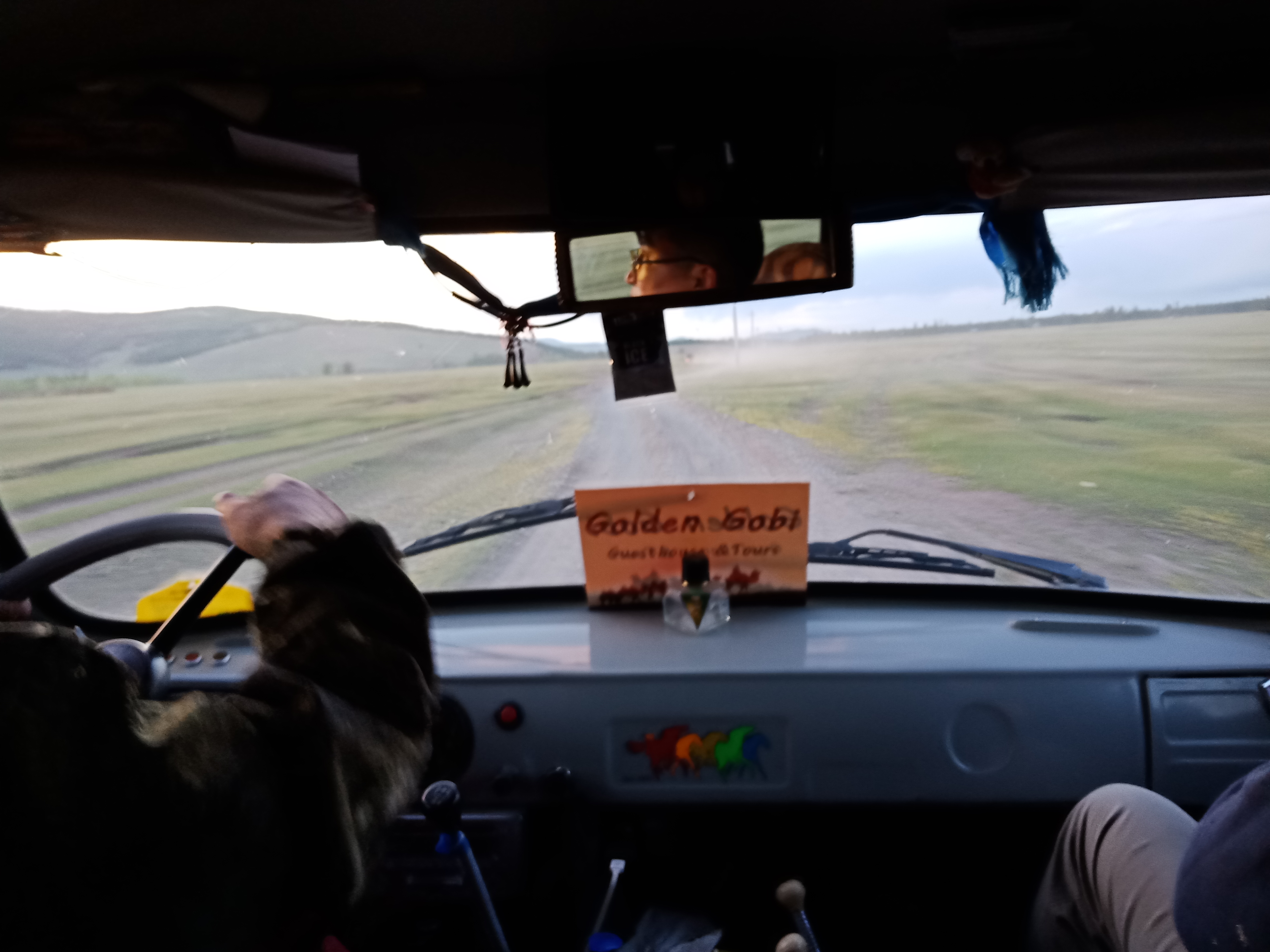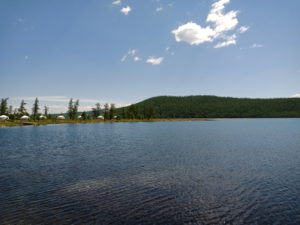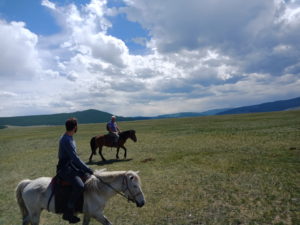
Overview
The most common way to travel Mongolia is to organise trips by region, either in one large route or loop, or in individual trips which come back through Ulaan Baatar before embarking on the next one. Tour companies will have set potential itineraries along each route with things to see and do or specific places to stay like specialised ger camps for tourists, however it’s usually possible to customise these as you wish. In our case, we often camped ad hoc in our camping tents in idyllic spots by woods or in the shelter of hills, and on one occasion our guide had to find a family who was willing to welcome us into their ger to spend the night – a traditional practice for nomads.
Here is a list of the regions you can travel and what you can expect from each of them. The country can be roughly divided into six travel regions, one or all of which can be accessed on a trip. Some may be combined into one trip without needing to return to the capital, depending on your travel choices.
Ulaan Baatar
The capital city, and Mongolia’s only real city. Most people don’t come to Mongolia to see Ulaan Baatar (Ulan Bator as it’s pronounced and sometimes translated from the Cyrillic script), which is fair enough – the wilderness of the countryside and the traditional nomadic way of life still carried out there is the main draw of this unique country for good reason, not the conformist leftover of communist regimes and signs of grim stumbling into industrial modernity and depression that the city evokes on first sight.
But,
Ulaan Baatar is kind of cool. It’s got some modern bars and restaurants showcasing traditional food and culture as well as their absorption of the finer trappings of the rest of the world, and there’s a friendly small-town Asian atmosphere mixed with down-to-earth realism of their Russian neighbours – as much a melting pot of cultures as Istanbul though much less of an assault on the senses.
Enjoy some food and drinks on long summer nights on Seoul Street, check out the black market for real-deal Mongolian deels, boots and other souvenirs at super-cheap prices, get a flavour for the countryside by doing a day-trip to Terelj National Park with its ridiculous 100m-tall statue of Genghis himself astride a horse which is resting on a two-storey museum, and relax as you plan your inevitable trip out of the city and into the great outdoors.
Gobi Desert

[Enjoying a second look at the sunset from the Singing Sand Dunes]
The Gobi desert is vast, the sixth largest desert in the world, and most northerly and cold, comprising over half of the more southern part of Mongolia.
It’s accessible with a lengthy drive out of Ulaan Baatar, and some days of our trip featured almost nothing in the way of sights or even features. Such is part of the charm of the place, the feeling of pure isolation akin to being on the moon, your jeep a boat bobbing in an ocean as you strain to see anything at all on any of your horizons.
Enjoy the sight of the plentiful herds of livestock – hundreds if not thousands of sheep, cattle, horses, camels and goats – and wildlife like rabbits, foxes, squirrels and desert eagles and vultures, empty vodka bottles strewn along the rough dirt tracks sometimes the only evidence of human life for miles and miles.
There is a relatively small section of stereotypical desert dunes – Khongoryn Els (the effects of frequent high winds cause them to be known as the Singing Sand Dunes) are located in Gobi Gurvansaikhan National Park – climb them at sunset for sublime views.
Camel rides are also possible, though the one we did wasn’t particularly exciting – more like a donkey ride on the beach than the more thrilling horse riding we did later on up the north.
Another site is the Flaming Cliffs, a beautiful canyon so-called because of the gorgeous effects of sunsets on its various walls and crevices, located a – relatively – short distance from the Singing Dunes.
Northern Mongolia

[Holiday gers on the edge of Khuvsgal Lake]
Northern Mongolia is a treat for those willing to take the short flight to Moron city to explore further by van. Contrasting the sprawling lunar landscape of the southern desert regions, the north features expansive green steppes surrounded by gorgeous snow-covered alpine peaks, huge forest plantations, rivers, streams and lakes.
An endless reel of dirt tracks passing through gently rolling hills, forest plantations and dotted features like shallow river beds and patches of trees give the feel of passing through the world’s longest golf course as your van takes on and conquers slowly but assuredly deeper and deeper into the wilds.
The environment has a more northern-European feel due to its higher latitude, and there are even quaint frontier-style villages with brightly coloured log cabins situated miles and miles from anywhere.
The indigenous Tsaatan people – a small tribe of reindeer herders – live here close to the Russian border. It’s possible to visit them, perhaps even to witness a shaman ceremony if you’re lucky (assuming that’s your thing). The best mode of transport to meet them is on horseback, trekking across wide-open fields, through thick woods, crossing rocky riverbeds and ascending mountains – it’s quite the workout for inexperienced horse-riders, but the expert Mongolian guides will take good care of you.
The province is also home to the beautiful Khuvsgal Lake, the largest lake in Mongolia by volume and one of the oldest lakes in the world. The lake area features many tourist-oriented camps with facilities which are great for relaxing after a few days spent on horseback or camping under the stars on the edge of isolated woodlands elsewhere in the province, miles and miles from anywhere.

[Horseback-riding across steppes, on the way to stay with the Tsaatan reindeer herders near the Russian border in Khuvsgal province]
Western Mongolia
Western Mongolia and Bayan Olgii province is the most remote and isolated part of the country. The landscape is similar to Northern Mongolia but more extreme: the huge Altai mountain range dominates; everything larger, more sparsely populated, while also being clearly more economically deprived. This rugged part of the country is only accessible by plane as road networks are either unreliable dirt tracks or don’t exist.
It’s worth the effort to get here, however, as its inaccessibility also makes it the most untouched part of the country. The native ethnic Kazakh people here still practice traditional eagle-hunting, and travellers can bear witness to this fascinating ritual during the season (November to March), or at least watch eagle masters fly their birds if outside hunting season.
Life and everything else here is difficult, and adventurous hikers can test themselves on multi-day hikes on glaciated peaks. The feeling of having earned your freedom in a place like Altai Tavan Bogd National Park is perhaps greater than anywhere else in this humbling country.
Central Mongolia
There’s a different but equally wonderful flavour of the Mongolian outback to be found in Central Mongolia, with verdant forests overlapping with more desertified areas from the expanding Gobi desert, as well as many historic and cultural sites. This means it’s a good region of the country for those restricted on time looking for a mix of what makes Mongolia such a unique destination on one trip, accessible by van from Ulaan Baatar.
The Orkhon Valley region is a UNESCO World Heritage Site, being honoured as a region representative of the country’s nomad culture dating back 2,000 years. Travellers can also visit Karakorum, the 13th Century capital of Mongolia established by Genghis Khan, and nearby the white walls of Erdene Zuu monastery which mercifully survived the Soviet religious purges which decimated the Buddhist church in the early part of the 20th century.
There’s more stunning geography with the volcanic basalt features of Terkhiin Tsagaan Lake (Terkhin White Lake) and the dormant Khorgo Mountain volcano adjacent to it and, as with most of the country, the area also has an abundance of wildlife such as deer and boar roaming freely. As with the rest of the country, everything is best accessed on horseback.
Eastern Mongolia
In the years following the removal of the Soviet regime from this independently-minded country, itself once a great conquering power in a bygone era, Genghis Khan has been restored in modern Mongolia’s consciousness as a mix between founding father, symbol of national pride and a god.
His face adorns the national currency, the international airport outside of the capital, and everything from hospitals to universities; pubs and restaurants to beer and vodka brands. Most outsiders’ first and only knowledge of Mongolia might be that Genghis Khan led the Mongols excursions across Asia at some point in history, and visitors inevitably have some level of interest in his life and story.
In the eastern reaches of the country, there is a Genghis Khan trail of sorts, with some sites related to his life. Genghis was so true to his nomadic existence that he didn’t even let people sketch pictures of him to record his image, and neither are there any structures left standing. All that is known of the Mongols is derived from the oral tradition, but given the still-living culture in the country today, some truth must have survived.
Thus his birthplace is said to be at Deluun Boldog, near Dadal village in Khentii province, just a few hundred kilometres east of Ulaan Baatar. Burkhan Khaldun is a mountain in the north-east of Terelj National Park, and is said to be where Genghis would come to offer himself and his prayers to the gods of the sky and the mountains; in a country which epitomises the wonders of nature over man-made structures and works of art, this is as appropriate a ‘tourist attraction’ as you might hope to find.
For enthusiasts of a different period of history, Khalkin Gol in the far-east is the site of the battle of the same name, and the region also features the abundance of natural life that one finds anywhere else in Mongolia, including moose, otters and bears – wild gazelle watching is a particular treat.